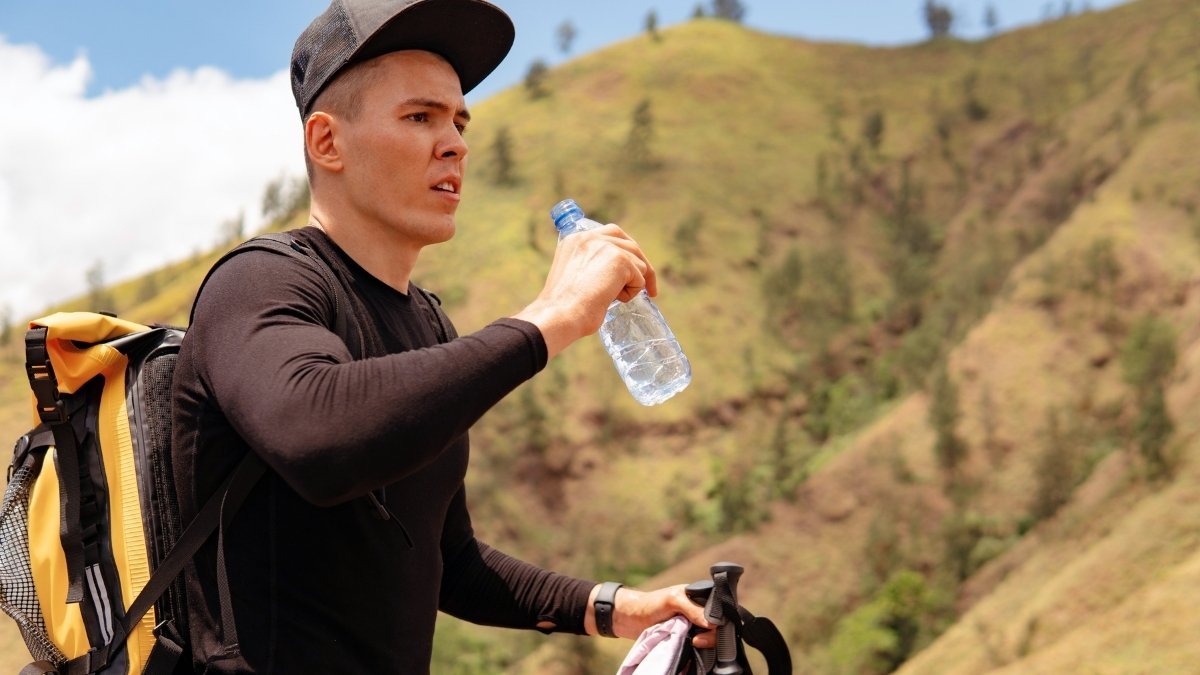That nagging headache an hour into your hike isn’t just bad luck. That sudden wall of fatigue you hit on the last mile isn’t just you being out of shape. It’s the silent problem plaguing most hikers: you’re probably dehydrated before you even lock your car.
A startling three out of four of us start our hikes already low on water. The common advice to “drink when you feel thirsty” is dangerously wrong—thirst is your body’s last-ditch alarm, not a helpful reminder.
By then, your energy and decision-making are already suffering. This guide provides a simple, actionable system to fix that, helping you avoid both dehydration and its tricky, lesser-known cousin, hyponatremia. Stop guessing and start hiking with a real hydration plan.
Why Your Body Needs Water to Keep Going
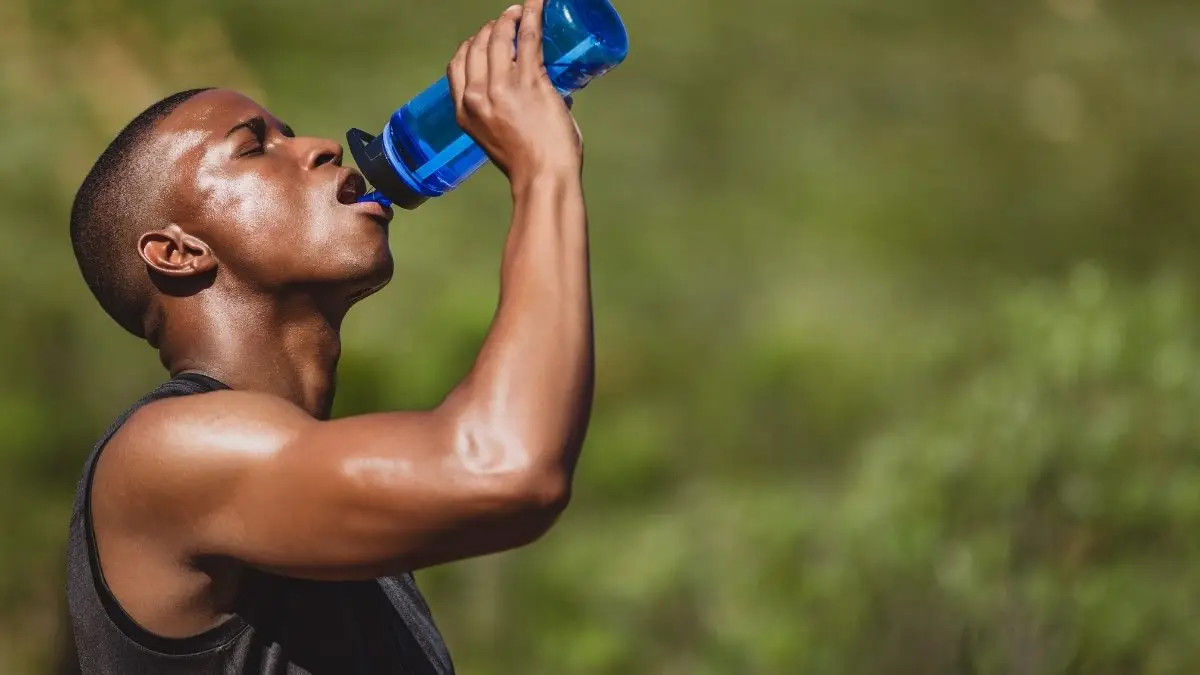
When you hike, your body is like an engine. It needs water for three big jobs: staying cool, keeping muscles working, and thinking clearly.
- Staying Cool: Sweating is how your body cools down. As you work hard and heat up, you sweat. When the sweat dries, it cools your skin. You need plenty of water to make enough sweat to stay cool. In dry places like the Grand Canyon, your sweat can dry so fast you don’t even notice how much water you’re losing.
- Helping Your Muscles: When you’re dehydrated, your blood gets thicker. Thicker blood doesn’t flow as well, so your muscles don’t get enough oxygen. This makes you tired faster, can cause muscle cramps, and makes you weaker.
- Thinking Clearly: Being just a little dehydrated (losing only 2% of your body weight in water) can make it harder to focus and make good decisions. This is a major safety problem on the trail.
Bad hydration is a bigger safety risk than most people think. SAR reports often list “bad judgment” (24% of cases in one study) and being “tired” as main reasons for rescues. Both of these are caused by dehydration.
Getting lost is the reason for 41% of all SAR calls. It’s very likely that many of these hikers made mistakes because they were dehydrated. This means the official 10% statistic for “inadequate food and water” is probably way too low.
The Signs of Dehydration: From Bad to Worse
Dehydration isn’t just on or off. The symptoms get worse over time. If you know the early signs, you can fix the problem before it becomes an emergency.
A simple way to remember the signs is “Thirsty Dogs Drink Frequently”: Thirst, Dark urine, Dizziness/Dry mouth, and Fatigue.
Use this table on the trail to check how you’re doing.
| Symptom | Early Warning (Mild to Moderate Dehydration) | Red Flag (Severe Dehydration – Act Immediately) |
| Urine Color | Dark yellow | Very little or no pee; brown color |
| Thirst | You feel thirsty | You feel extremely thirsty and can’t quench it |
| Energy Level | Feeling tired, slow, or have a headache | Very tired, weak, can’t move much, or fainting |
| Mental State | Normal, maybe a little hard to focus | Cranky, confused, stumbling, or mumbling |
| Physical Signs | Dry mouth, chapped lips | Dizzy, fast heartbeat, you stop sweating even if it’s hot, skin is clammy or hot and dry |
The Other Danger: When Too Much Water Is a Problem (Hyponatremia)
While not drinking enough is common, drinking too much plain water can also be dangerous.
This is called Exercise-Associated Hyponatremia (EAH). It happens when you drink so much water that you dilute the salt in your blood to unsafe levels This isn’t just a problem for pro athletes. It has happened to regular hikers in the Grand Canyon.
The big problem with EAH is that its symptoms—feeling sick, headache, being tired, and confusion—look just like dehydration or heat stroke.
This makes it hard to know what to do. If you think it’s dehydration and drink more water, you can make EAH much worse, leading to brain swelling or even death.
You can prevent EAH with two simple rules. First, don’t drink more water than you sweat out. A good limit is about one liter per hour when you’re working hard. If you gain weight during a hike, you’re drinking too much.
Second, if you’re hiking for more than an hour or two, especially in the heat, you need to replace electrolytes along with water to keep your salt levels balanced.
The 2025 Hiker’s Hydration Plan: A 3-Step System
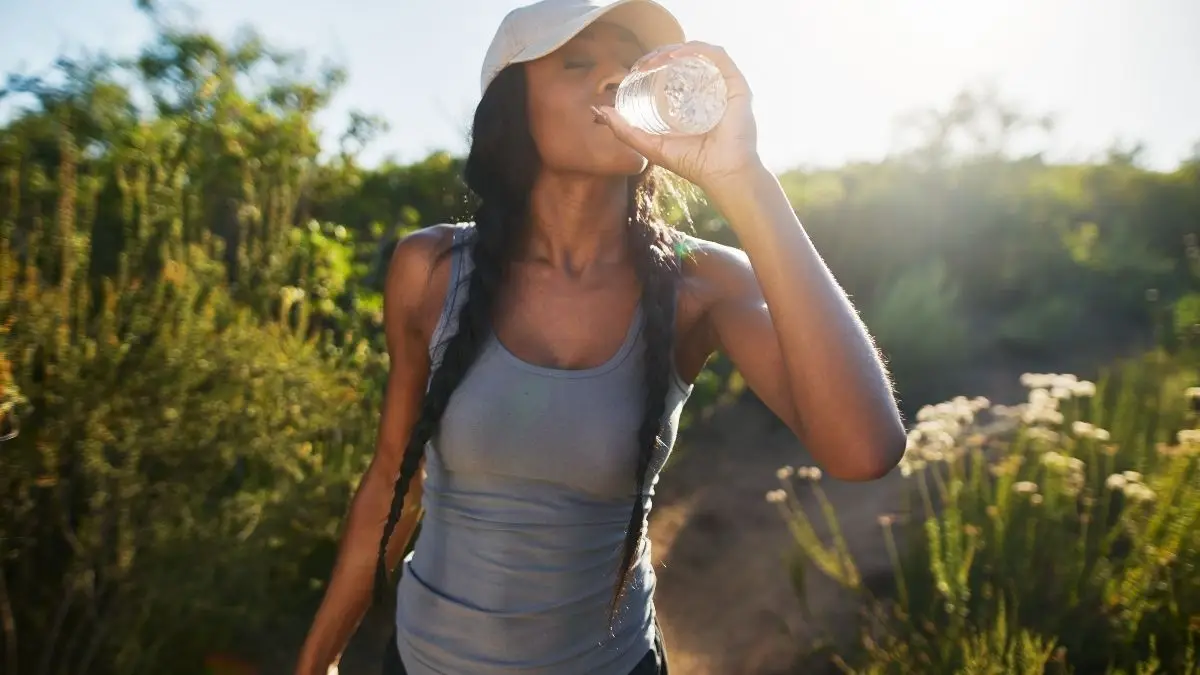
Good hydration is a process. It starts before your hike, continues on the trail, and finishes when you’re done.
Step 1: Pre-Loading (The Day Before)
Showing up to the trail already hydrated is the most important step. This starts the day before your hike, not by chugging water in the parking lot.1
- The “Camel Up” Plan: Drink 16-20 ounces (about 500-600 ml) of water 2-3 hours before your hike. Then, drink another 8-10 ounces (250-300 ml) about 20 minutes before you start. This gets your body ready for the hike.
- What to Eat Before: Eating foods with lots of water, like fruits and vegetables, helps. Salty snacks like pretzels or crackers also help your body hold on to water.
- What to Avoid: In the 24 hours before a hike, stay away from things that make you lose water. This includes alcohol and too much caffeine from coffee or soda.13
Step 2: On the Trail (The Sip-and-Snack Plan)
On the trail, you need a plan. Don’t just drink when you feel like it.
- The Main Rule: A good starting point is to drink 0.5 to 1 liter of water every hour you hike. You’ll need more if it’s hot, humid, or you’re at a high altitude.
- Drink on a Schedule, Not When Thirsty: The best thing you can do is drink on a schedule. Set a timer on your watch or phone to go off every 15-20 minutes. When it goes off, take a few sips of water. This makes drinking water a habit.
- Sip, Don’t Gulp: Your body absorbs water better in small amounts. Sipping lets your body take it in slowly. If you chug a lot of water at once, you’ll just pee most of it out.
- You Need Electrolytes: If your hike is longer than an hour, or if it’s hot out, water isn’t enough. When you sweat, you lose important minerals called electrolytes, like sodium and potassium.
They help your nerves and muscles work right. You should aim to get 300-600 mg of sodium per hour. You can get this from electrolyte drink mixes or salty snacks like pretzels, salted nuts, jerky, or even pickles.
This chart can help you pick an electrolyte supplement for 2025.
| Product Name | Sodium (mg) | Potassium (mg) | Sugar/Carbs (g) | Key Feature | Best For… |
| Liquid I.V. Hydration Multiplier 20 | 560 | 370 | 11 | Helps your body absorb water fast | Good all-around choice for quick rehydration. |
| Nuun Sport Tablets 20 | 300 | 150 | 1 | Fizzy tablet with low sugar | Hikers who just want electrolytes without extra sugar. |
| Tailwind Endurance Fuel 20 | 303 | 90 | 25 | Calories and electrolytes in one | Long hikes where you need fuel and hydration together. |
| LMNT 20 | 1000 | 200 | 0 | High salt, no sugar | Hikers who sweat a lot, are in extreme heat, or on a low-carb diet. |
Step 3: After the Hike (The Refill)
Your hydration plan isn’t over when the hike is. Drinking fluids after helps your muscles recover and feel less sore.
- The Exact Way: To be very precise, you can weigh yourself before and after your hike (with no gear on). For every one pound you lost, drink 16-24 ounces (500-700 ml) of fluid. This tells you exactly how much water you lost.
- The Simple Way: A simpler way is to just keep sipping water and drinks with electrolytes for a few hours after your hike. Eating a meal with carbs and salt will also help you get your fluid levels back to normal.
The 2025 Hiker’s Hydration Gear
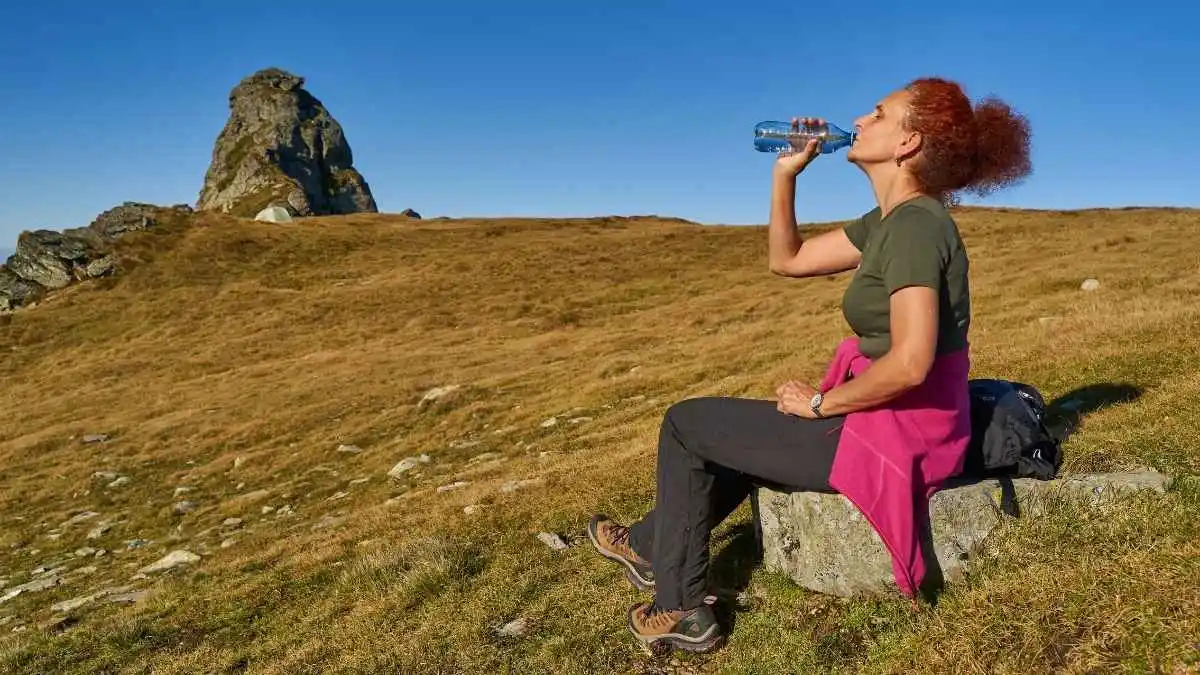
The right gear makes it easier to stick to your hydration plan. If your water is easy to get to, you’ll drink more often.
How to Carry Water: Bladders vs. Bottles
- Hydration Reservoirs (Bladders): A bladder’s best feature is the drinking tube. It lets you sip water without using your hands while you walk. This helps you drink on a schedule.
But, they can be harder to clean, it’s tough to see how much water is left, and they can leak in your pack. - Water Bottles: Bottles are tough, easy to fill and clean, and you can easily see how much you’ve had. Many ultralight hikers use a Sawyer Squeeze filter with a disposable Smartwater bottle.
The downside is you have to stop or take off your pack to get your bottle, which might make you drink less often. - The Hybrid System: Many hikers use both. They use a bladder for plain water so they can sip easily. They carry a separate bottle for electrolyte drinks, which is also easier to refill at streams.
Top Hydration Packs of 2025
A good hydration pack makes carrying water easy.
| Model (Men’s / Women’s) | Category | Capacity | Price | Key Feature |
| Gregory Citro 24 / Juno 24 H2O | Best Overall Daypack | 24 L | $170 | Very comfortable with a great, easy-to-use bladder. |
| Osprey Manta 24 / Mira 22 | Best for Long Hikes | 24 L / 22 L | $200 | Fits your body well and has a back panel that lets air flow through. |
| Camelbak M.U.L.E. 12 | Best Small Pack | 12 L | $130 | Good organization and fits snugly for moving fast. |
| Salomon ADV Skin 12 | Best Trail Running Vest | 12 L | ~$160 | Fits like a shirt so it doesn’t bounce; has soft bottles on the front. |
| TETON Sports Oasis 18 | Best Budget Option | 18 L | $50 | A great value with good features for most hikers. |
How to Get Safe Water on the Trail in 2025
You must treat all water you get from nature, even if it looks clean. Streams and lakes can have tiny germs like Giardia that can make you very sick.
| Method / Product | Type | Weight | Pros | Cons | Best For |
| Sawyer Squeeze | Squeeze Filter | 3 oz | Very light, works well, lasts a long time, not expensive. | Needs to be cleaned with a syringe; can break if it freezes. | The top choice for long-distance and ultralight hikers. |
| Katadyn BeFree | Squeeze Filter | 2.3 oz | Filters water very fast, easy to clean by just shaking it. | Doesn’t last as long as the Sawyer; the bottle isn’t as tough. | Day hikes and trail running when you want to be fast. |
| Platypus GravityWorks | Gravity Filter | 11.5 oz | Filters a lot of water with no effort; great for groups. | Heavier and bigger than squeeze filters; needs a place to hang. | Groups and families who need a lot of clean water at camp. |
| Katadyn Micropur Tablets | Chemical | <1 oz | Kills viruses, which filters don’t; lightest and simplest option. | You have to wait 30 minutes or more; can make water taste funny. | A must-have for emergencies and for travel to other countries. |
Tips for Special Conditions
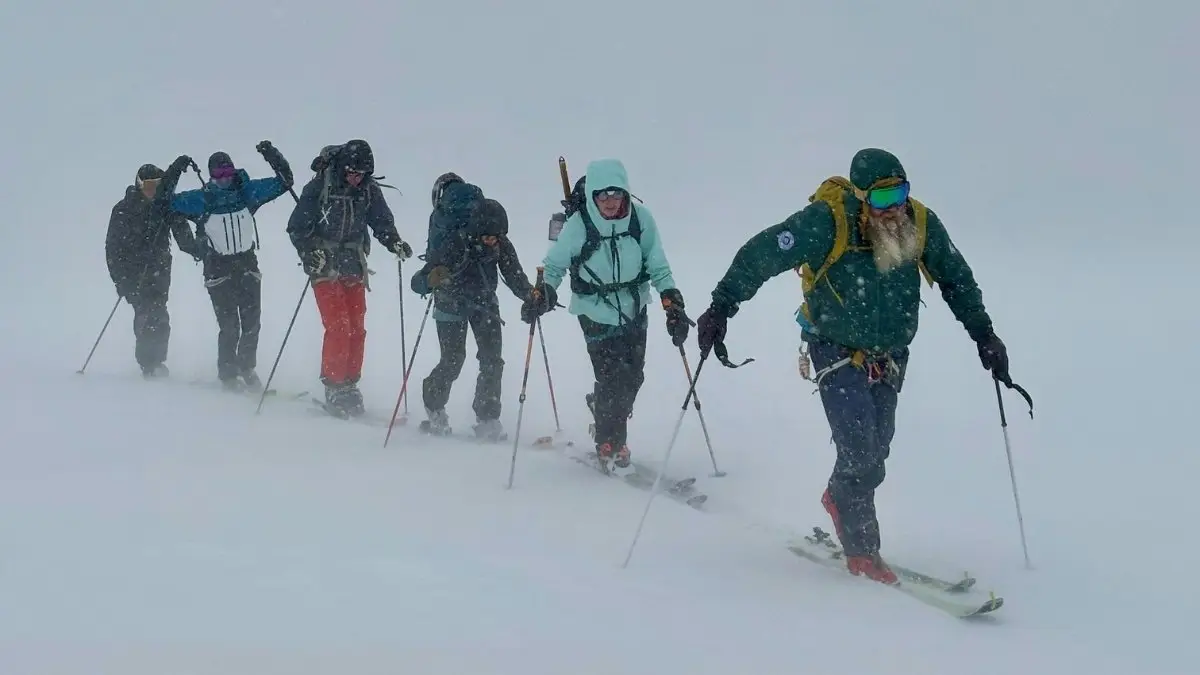
Hiking at High Altitude
You need a lot more water when you’re up high. The air is thinner and drier, so you lose more water just by breathing.
- The Rule: Plan to drink at least 25-50% more water than you normally would when hiking at high altitudes.
- The Body’s Trick: At high altitudes, you often don’t feel as thirsty, so you can’t trust that feeling. This is why drinking on a schedule is so important.
- Similar Symptoms: Dr. Ross Anderson, a wilderness medicine expert, points out that the first signs of dehydration—headache, feeling tired, and dizziness—are the same as Acute Mountain Sickness (AMS). Drinking a lot of water is the first thing you should do to prevent or check for AMS.
Cold Weather Hiking
It’s easy to forget about hydration in the cold, but it’s a hidden danger. You lose water with every breath in the cold, dry air. You also sweat under your warm layers, but you might not notice it.
- The Body’s Trick: Your body’s thirst signal can be up to 40% weaker in the cold. Your body is focused on staying warm, not on telling you you’re thirsty.
- Pro-Tip: Carry a thermos with a warm drink like herbal tea. This can make you want to drink more when it’s cold. Keep your water bottles inside your jacket so they don’t freeze.
A Parent’s Guide to Hydrating Kids
Kids get dehydrated more easily than adults. They also don’t always notice when they’re thirsty.
- Check Their Water: Sports medicine doctor Emily Harold suggests giving each child their own water bottle or bladder. This way, you can see exactly how much they are drinking.
- Make Them Drink: Kids will often keep playing and forget to drink, even if they are thirsty. You need to plan regular drink breaks for them.
- Know the Signs for Kids: Besides the usual signs, look for a dry tongue and lips, no tears when they cry, and sunken eyes. For babies, fewer than six wet diapers in a day is a sign.

